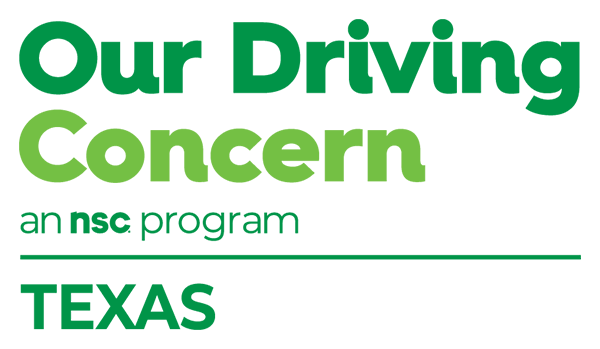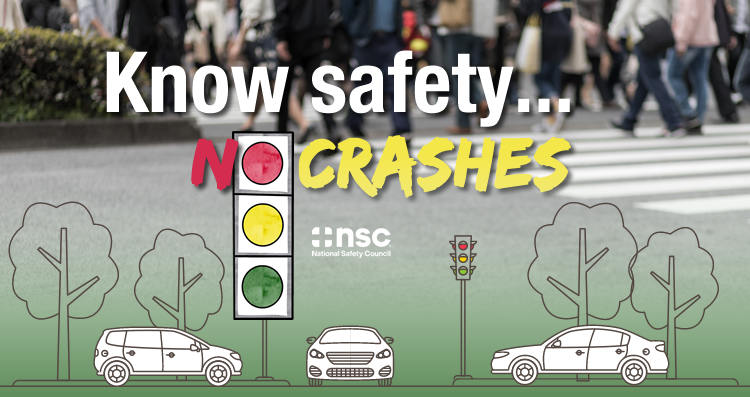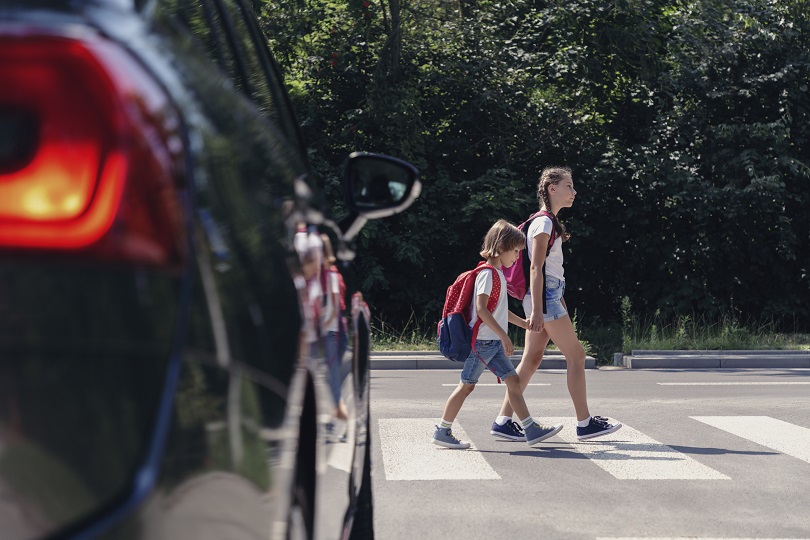Crosswalks. School zone signs. Crossing guards. School buses. Student pedestrians with backpacks.
These are common elements within a school’s traffic system that indicate to drivers to slow down, exercise caution and anticipate stopping for pedestrians. For student pedestrians, use of traffic controls and designated crosswalks can help to ensure a safer journey to the classroom and home. Based on site safety observations, here are four ways to ensure those happy feet travel safely:
1. Recognizing Hazards & Working Together: It’s important for employers and their contractors to establish safe and designated walking paths around construction zones present in and around their facilities, especially when construction barricades obstruct pre-existing pathways used by pedestrians. By assessing impacted walkways and providing a safe, continuous and unobstructed path, a potential slip/trip/fall or roadway incident could be prevented. Consider for a moment that pedestrians could be an employee, a visitor, a student or customer from your line of business. Construction obstacles on the facility without a clear designated path for pedestrians could hinder an employee’s ability to arrive safely on time for work. Employees could be slowed as they walk from a bus stop down the block or by walking on uneven surfaces from the parking lot. This could make them late punching the timeclock, or even worse, cause an injury on their way to the timeclock! Within a neighborhood school setting, obstructed or undesignated pathways could cause a student pedestrian to deviate from the safest route to school. This could cause a late arrival to class, or a mishap on the way to school. By mitigating risks with safety and customer service in mind, these efforts could benefit pedestrians of all ages and abilities visiting your campus or facility.
2. Sharing Responsibilities: Driver and pedestrian safety must co-exist harmoniously to reduce incidents. Knowing the right-of-way rules can help both drivers and pedestrians navigate the roadway system, whether traveling by foot or behind the wheel. At times, hesitation among drivers and pedestrians has been observed at crossing areas during school zone hours due to speeding, distracted driving and distracted walking. In situations like these where there are designated crosswalks, but additional support is needed for the safety of student pedestrians, it helps to provide a trained crossing guard or a traffic monitor.
3. Be Seen & Manage Environmental Factors: Look around and be seen. Listen and be heard. Where crosswalks and roadways begin and end, keep those happy feet safe by constantly scanning the environment, being visible and staying alert. For pedestrians, this means wearing bright colored clothing or reflective gear and seeking out designated and illuminated crosswalks. It also means you avoid walking in between parked vehicles, potentially getting “lost” in a blind spot, before you cross the street. This is especially true during early morning hours on the way to school or work. Pedestrians can stay alert by keeping their heads up and avoiding distracted walking. Distractions like earbuds can prevent walkers from hearing audible warning signals. For bicyclists, this means wearing a helmet, using safety lights, bike reflectors and bike bells and adhering to the rules of the road.
4. Avoid Taking Shortcuts: If the nearest crosswalk requires pedestrians to walk further out of the way to cross the street safely, how likely are they to take that route? Based on my own safety observations, when pedestrians perceive crosswalk locations to be inconvenient, this can lead walkers to create shortcuts. It is human nature to favor the shortest path to a destination, but what if it is not the safest option? For example, one might cross mid-block at an undesignated crossing instead of walking further down the block to a designated crosswalk. There is no short-cutting safety. Implementing educational awareness efforts to stress the importance of taking that extra step to the nearest crosswalk and reminding drivers to slow down where pedestrians are present, especially when approaching a crosswalk or school zone, can be an effective way to reduce risky behavior and promote pedestrian safety within a school’s traffic system. Where crosswalks and roadways begin and end, let’s keep those happy feet safe by recognizing and mitigating walkway hazards, knowing the rules of sharing the road, being aware of environmental factors and avoiding unsafe shortcuts. Your safety is worth it.
Brenda Avery is a risk management coordinator, CSRM, with the Northside Independent School District in San Antonio, TX. All views and opinions expressed do not necessarily represent those of the NISD.



